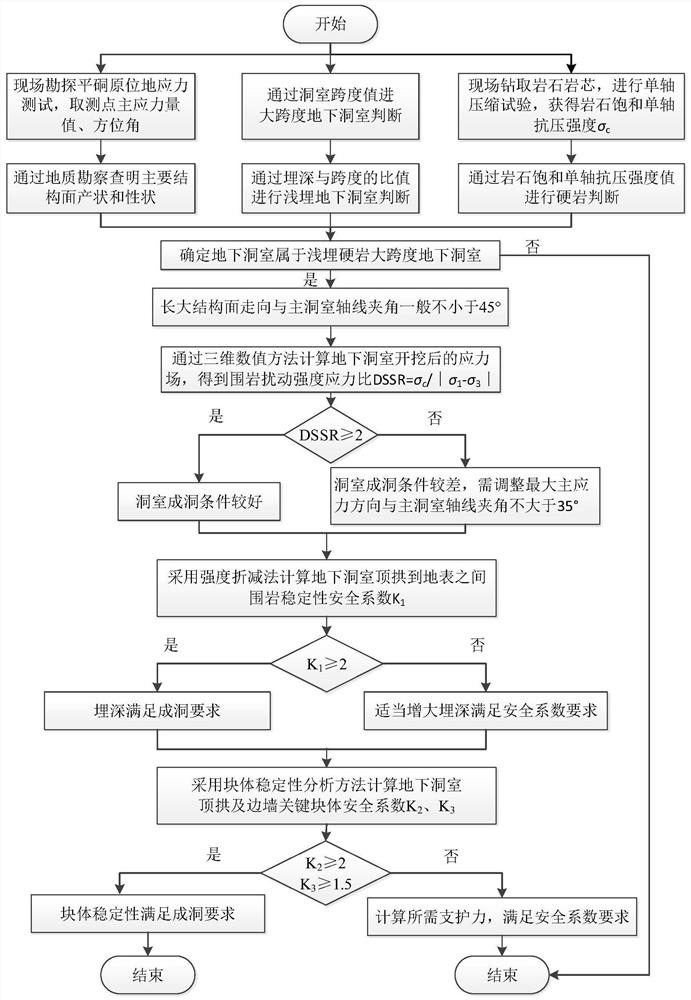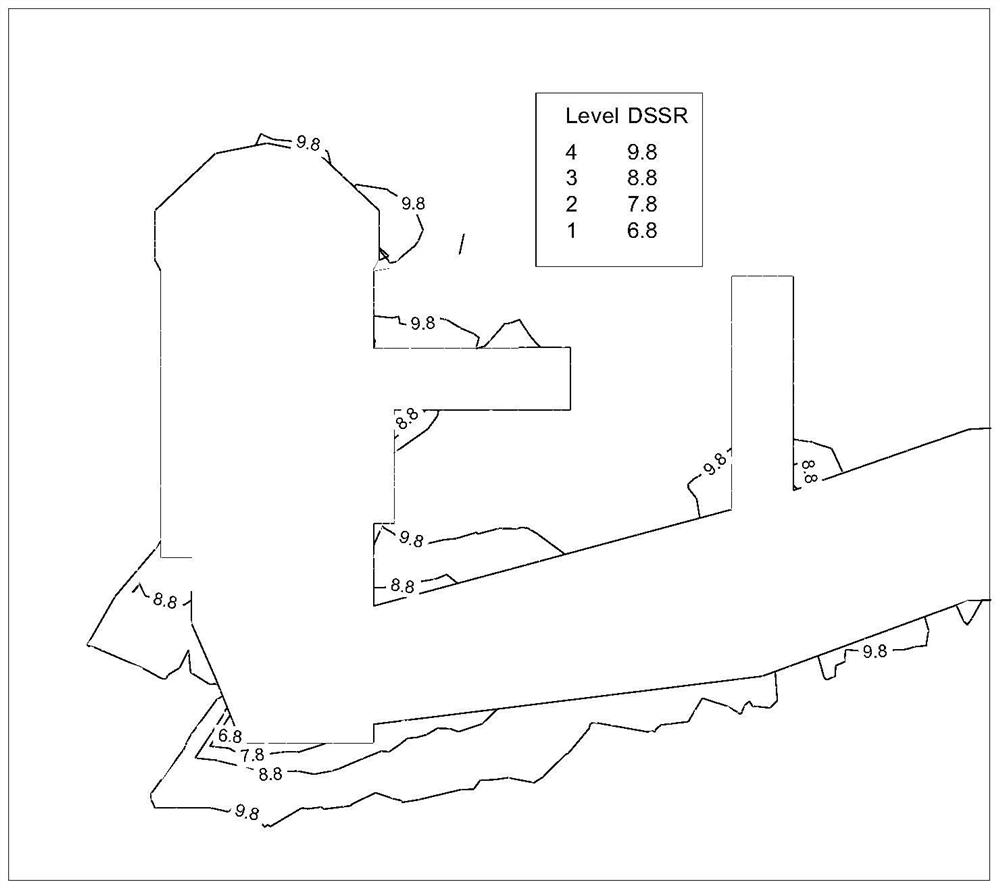A Quantitative Evaluation Method for Cavitation Conditions of Large-Scale Underground Cavities in Shallow Buried Hard Rock
A technology for underground caverns and evaluation methods, applied in the direction of measuring devices, instruments, geometric CAD, etc., can solve the problems of lack of comprehensiveness and representativeness, the safety of key blocks in underground caverns, etc.
- Summary
- Abstract
- Description
- Claims
- Application Information
AI Technical Summary
Problems solved by technology
Method used
Image
Examples
Embodiment Construction
[0022] The present invention will be described in further detail below in conjunction with the accompanying drawings and embodiments, but these embodiments should not be construed as limiting the present invention.
[0023] Such as figure 1 As shown, the implementation steps of a method for quantitative evaluation of the cavitation conditions of a shallow buried hard rock large-scale underground cavern of the present invention are as follows:
[0024] Step 1: In the preliminarily planned underground cavern layout area, select typical parts through on-site exploration adit for in-situ stress test, and use three-dimensional hydraulic fracturing method to carry out in-situ stress test on the engineering area. In this case, the stress The test method is the three-dimensional hydraulic fracturing method, and the principal stress value and azimuth angle of the measuring point are obtained. The number of ground stress measuring points should not be less than 4 points.
[0025] Step...
PUM
| Property | Measurement | Unit |
|---|---|---|
| compressive strength | aaaaa | aaaaa |
Abstract
Description
Claims
Application Information
 Login to View More
Login to View More - R&D
- Intellectual Property
- Life Sciences
- Materials
- Tech Scout
- Unparalleled Data Quality
- Higher Quality Content
- 60% Fewer Hallucinations
Browse by: Latest US Patents, China's latest patents, Technical Efficacy Thesaurus, Application Domain, Technology Topic, Popular Technical Reports.
© 2025 PatSnap. All rights reserved.Legal|Privacy policy|Modern Slavery Act Transparency Statement|Sitemap|About US| Contact US: help@patsnap.com


